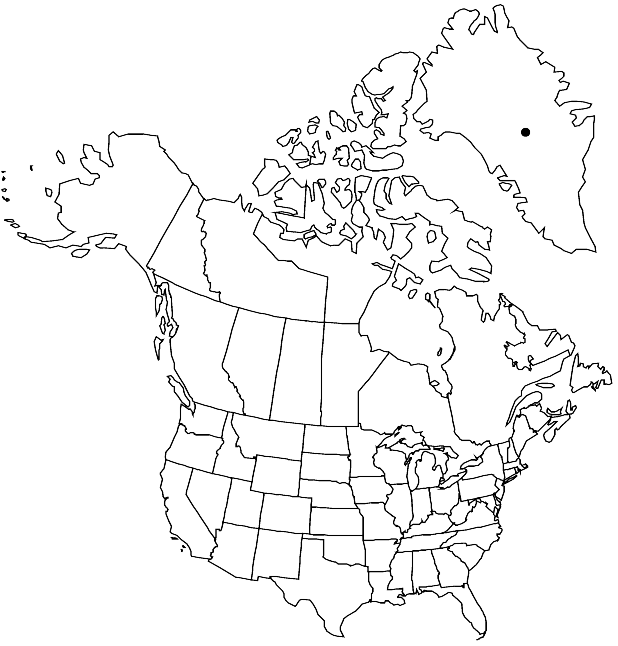Draba sibirica
Neue Denkschr. Schweiz. Naturf. Ges. 41: 318. 1907.
Perennials; (stoloniferous); caudex branched (sparsely covered with persistent petiole remains, branches slender, creeping); scapose. Stems (subdecumbent when sterile), unbranched, 0.5–2.5 dm, sparsely to densely hispid, trichomes malpighiaceous, (flowering scapes sparsely pilose proximally with simple trichomes, often glabrous on distal 1/2). Basal leaves rosulate; petiolate; blade oblong-lanceolate or oblanceolate, 0.4–2.2 cm × 1–5(–10) mm, margins entire, surfaces often pubescent, sometimes glabrous (except margins), with appressed, malpighiaceous trichomes (these sometimes with 1 or 2 shorter, lateral branches, appearing 3-fid or cross-shaped). Cauline leaves 0. Racemes 7–20-flowered, ebracteate, considerably elongated in fruit; rachis not flexuous (straight), glabrous. Fruiting pedicels divaricate, straight or curved, (often filiform), 5–18(–23) mm, glabrous. Flowers: sepals (erect), oblong or ovate, 2–2.7 mm (lateral pair subsaccate basally), glabrous or abaxially sparsely pilose, (trichomes simple); petals yellow, narrowly obovate, 4–6 × 2–3 mm, (apex emarginate); anthers ovate-subcordate, 0.4–0.5 mm. Fruits usually oblong to elliptic, rarely sublinear, plane, flattened, 4–8 × 1.5–2.2 mm; valves glabrous, (obscurely veined); ovules 24–30 per ovary; style 0.5–1 mm. Seeds (brown), ovoid, 0.9–1.2 × 0.5–0.6 mm. 2n = 16.
Phenology: Flowering May–Jul.
Habitat: Wet places on rocky slopes
Elevation: 0-300 m
Distribution

Greenland, Europe (Russia), Asia (Caucasus, Iran, Russian Far East, Siberia, Turkey, central republics).
Discussion
Draba sibirica is one of three species of the genus in North America exhibiting malpighiaceous trichomes. It is easily distinguished from others (D. malpighiacea and some plants of D. spectabilis) by a complete absence of cauline leaves. It is found in the flora area in northeastern Greenland.
Selected References
None.